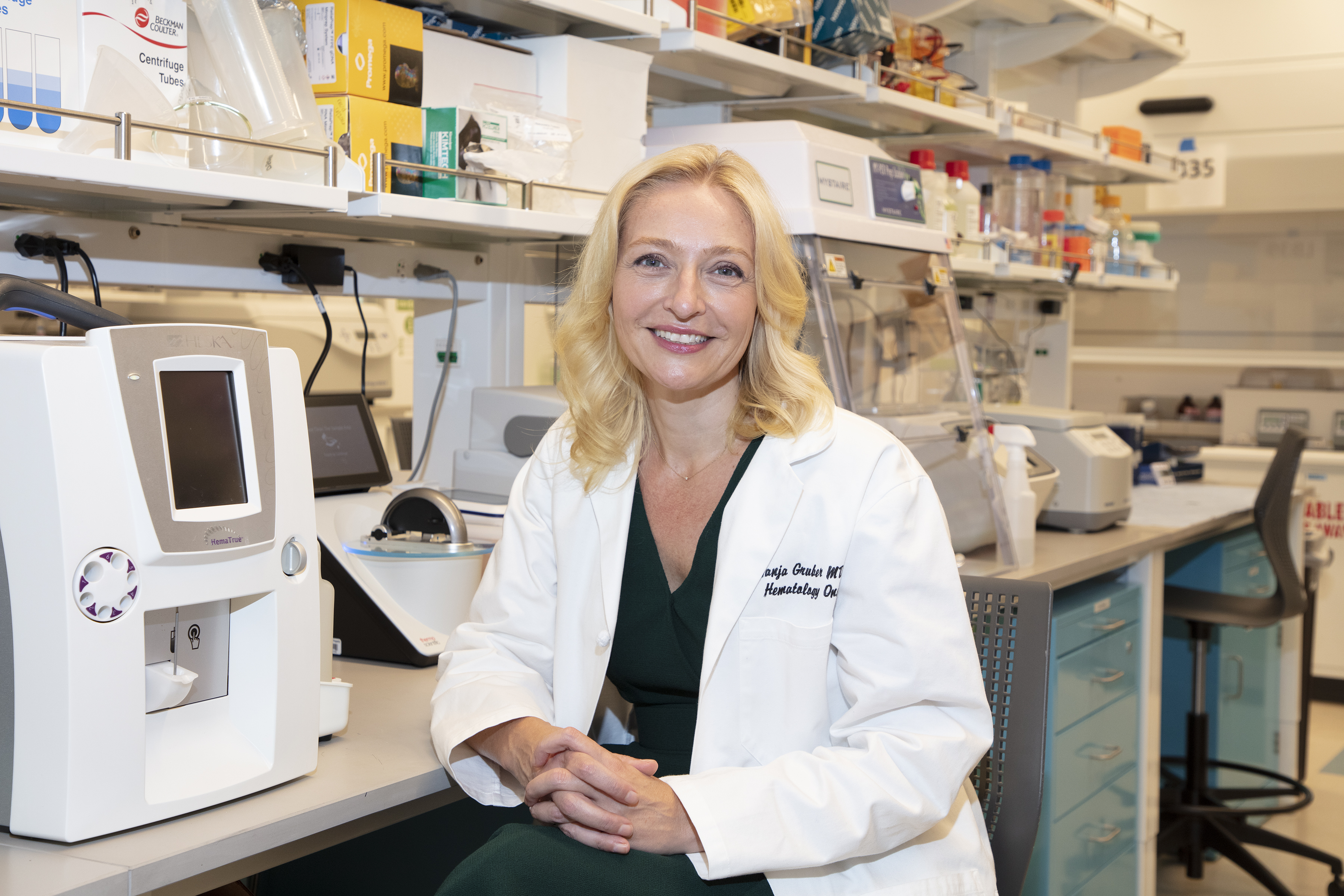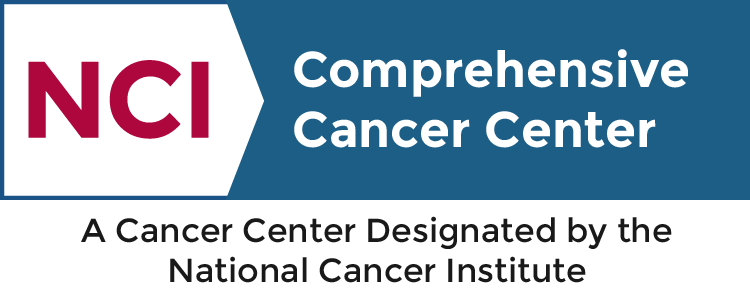Leukemia is the most common cancer among children ages 0 to 14. Fortunately, as treatment has improved, the five-year survival rates for pediatric leukemia have gone from 58% in the mid-1970s to 84.7% in the last decade.
To learn more about how Stanford approaches pediatric leukemia, we spoke with Stanford Cancer Institute leader Tanja Gruber, MD, Chambers Family Endowed Professor for Pediatric Cancer, director of the Bass Center for Childhood Cancer and Blood Diseases at Lucile Packard Children’s Hospital, division chief of the pediatric hematology, oncology, and stem cell transplantation and regenerative medicine, and associate director of childhood cancer at the Stanford Cancer Institute.
Pediatric and adult leukemia may differ in frequency, biology, and treatment
The frequencies of the different types of acute and chronic leukemia differ between pediatric and adult leukemia. For example, chronic lymphocytic leukemia is seen in adults but is not common in the pediatric setting.
Adults and children may share some leukemia subtypes, but the mutation frequencies that drive the shared subtype may vary. An example is acute lymphoblastic leukemia (ALL), where the fusion gene TEL-AML is frequent in pediatric patients but uncommon in adult patients. Other subtypes, like Philadelphia-like acute lymphoblastic leukemia (Ph-like ALL), are common in the adolescents and young adults (AYA) setting, so the subtype spans the transition from childhood to adulthood. These biological differences can lead to differences in outcomes, which is seen with TEL-AML leukemia responding well to treatment, but Ph-like ALL is more resistant and is a higher-risk subtype. In fact, over 90% of pediatric patients survive ALL, but the survival rate is only 40% in the adult setting.
Gruber says, “All of these different biological subtypes have different outcomes, and there are different implications in how high risk they are and the ability to cure them, which is reflected in the outcome differences we see between pediatric and adult leukemia when subtypes are shared.”
Another key difference between pediatric and adult leukemia is treatment regimens. Providers give the drug asparaginase for ALL more often to pediatric patients than adults because the medication is better tolerated by children. For adult patients, providers often have to take into account coexisting conditions that children typically do not have that can make treatment more difficult, such as hypertension which makes administering steroids complicated. Finally, Gruber notes that adults tend to have more side effects and that some complications are rare in children, such as acute vascular necrosis, which isn’t screened for until age 10.
Stanford brings innovative treatments to pediatric patients by supporting clinical trials
Gruber says that data shows patients enrolled in clinical trials have better outcomes. Clinical trials also advance cure rates and help researchers gain a better understanding of the disease so that more effective treatments can be developed.
Because pediatric cancer is relatively rare, Stanford participates in many different consortia so providers have more options to help their patients find the best opportunities for treatment. While many pediatric hospitals limit their clinical trials to those from the Children’s Oncology Group (COG), Stanford participates in a variety of clinical trials consortia, including clinical trials run by St. Jude’s and the Pediatric Oncology Experimental Therapeutics Consortia (POETIC). Through the consortia, Stanford has clinical trials for all different subtypes of pediatric leukemia.
“Across all of Stanford’s pediatric oncology program, there is a large variety of clinical trials, with the current count being over 50 interventional trials across all cancers. When a patient relapses, research coordinators identify trials, and Stanford providers discuss with the patient’s family the options and recommendations of enrolling compared to not enrolling. The variety of clinical trials offered makes Stanford unique.”
Sometimes parents need education on clinical trials to alleviate concerns that their child may be given a treatment they fear is ineffective or harmful. Gruber explains that there are two scenarios providers tend to encounter. For parents of newly diagnosed patients who are considering enrollment in a trial that is evaluating the addition of a new drug, there is typically data in the relapsed and refractory setting that suggests the drug will benefit their child and that the child’s providers believe the drug is as good, if not better, than the standard of care. The care team also typically has sufficient data to share with families on known side effects.
The second scenario is a relapsed patient who is not responding to treatment. At that point, the patient’s care team will provide the patient with treatments that are in early-phase studies. The drug may have been evaluated in adults but not children, or it may not have even been tested in the adult population and would be an experimental study. Gruber says that when they’re presenting these options to families they’ve unfortunately gotten to the point where they’ve exhausted other treatment options and nothing is working.
She remarks that Stanford takes great pride in developing early-phase studies that are safe, and they typically start patients at the lowest treatment dose, which may be too low to initially have activity according to preclinical studies, and they increase the dose as they enroll more patients in the study to ensure the drug is safe.
“We really tend to skew on the side of safety because it is so important for the children to be safe when they're involved in these trials.”
CAR-T cell therapy is a game changer in treating pediatric leukemia and other cancers
Gruber notes that one of the bright spots at Stanford is the CAR-T cell therapy effort led by SCI leader Crystal Mackall, MD. This therapy is dominated by its use in leukemias, and its first FDA approvals were for pediatric leukemia.
Mackall’s lab is developing CAR-T cell therapy for other types of cancers, which Gruber believes will be a big area of investigation in coming years and that the list of diagnoses it’s used for will grow. She notes that it holds a lot of promise for solid tumor and brain tumor patients because the therapy can cross the blood-brain barrier and get into the central nervous system. In fact, Mackall’s group, in collaboration with SCI member Michelle Monje’s, MD, PhD, group, has a CAR-T cell study showing that CAR-T cells can be administered directly into the cerebrospinal fluid, effectively bringing the therapy directly to the cancer’s site.
Currently, CAR-T cell therapy is used in relapsed and refractory patients, but Gruber believes that in the future it will become part of the standard of care for a subset of newly diagnosed patients.
“We're really fortunate to have Crystal at Stanford. I'm pretty proud that pediatric oncology is full of investigators like her who are making an impact in the field that extends beyond children and includes all cancer patients.”
Gruber’s lab advances knowledge in treating acute megakaryoblastic leukemia
Gruber’s lab focuses on a type of high-risk acute myeloid leukemia (AML) called acute megakaryoblastic leukemia, which is not cured with the standard AML chemotherapy. Her group discovered the fusion gene CBFA2T3-GLIS2 that drives this cancer and has been able to use immunotherapy to generate immune responses in the lab. This immunotherapy involves co-culturing patient samples with T cells that are HLA-matched and activating those T cells to kill the leukemia. The therapy is currently being evaluated in mouse models to see if it can be brought to clinical trials.
In explaining the therapy and research, she says, “If we co-culture the T cells with the leukemia cells, it's actually a subset of the T cells that are responding. We're now looking to identify the T-cell receptor of the T cells that are responding to that specific cancer. Whenever you have a T cell that's recognizing a cancer cell, the T-cell receptor is what recognizes the cancer cell. What it is recognizing is a peptide, a portion of protein that's presented on the surface of the cancer cell, complexed with a molecule called MHC. The T-cell receptor recognizes the protein that MHC presents. Identifying the T-cell receptors and the peptides that it's recognizing is the first step towards being able to engineer a T cell to specifically recognize the cancer and use that as a therapeutic modality.”
Her group has been able to generate activated T cells and they’ve also identified the peptides presented on the surface of these cells in the MHC complex.
“We’ve got the two sides of the coin, and now we need to put them together.”
In a second line of research, her group is using mouse models of acute megakaryoblastic leukemia to understand the subtype’s causes and why the subtype is so resistant to chemotherapy.
“In terms of preclinical studies, there are two avenues. There’s understanding the disease, and there’s testing new disease treatments. Understanding the disease can lead to identifying new treatments. We really feel like both lines of investigation are important.”
A promising treatment for infant acute lymphoblastic leukemia treatment is in clinical trials at Stanford
Gruber is also conducting a clinical trial in newly diagnosed patients with infant acute lymphoblastic leukemia. In the initial trial, her team evaluated the addition of two drugs to standard ALL chemotherapy, a proteosome inhibitor called Bortezomib and a histone deacetylation inhibitor called Vorinostat. She dubs this a “new chemo backbone.” The results are promising, and she will present them at this year’s annual American Society of Hematology (ASH) meeting.
In September, her team is launching a successor study of the new chemo backbone that includes protocol modifications to make the treatment even better. One change uses immunotherapy by incorporating a bispecific monoclonal antibody, blinatumomab, that recognizes both the T cell and cancer cell and brings them into close proximity so that the T cell can kill the cancer cell.
Another change is that they will give patients a new drug that specifically targets the mutation these patients possess. A form of precision medicine, this drug inhibits the protein menin, which is critical for the fusion gene KMT2A that causes the leukemia. The drug is not yet FDA approved, and while there are studies in relapsed adult patients, this will be the first study on newly diagnosed patients. It will be a Stanford-led study at 25 sites throughout the U.S. and Canada.
Gruber notes that she’s been able to help many infants with ALL who haven’t responded to treatment go into remission with the new chemo backbone and that it’s incredibly gratifying and meaningful to be able to provide these families with effective treatments.
“I have many patients that I've put into remission and cured with the new chemotherapy backbone we established in my first infant trial. That's really gratifying because there was a time when that patient wouldn't have made it. It's especially gratifying when one of those patients comes back to visit you and you saw them when they were eight months old and now they're walking and talking. That makes a huge impact on me as a physician. Seeing children grow up and the bond you form with them during the treatment is really special, but the happiest day is when they don’t have to see me anymore.”



